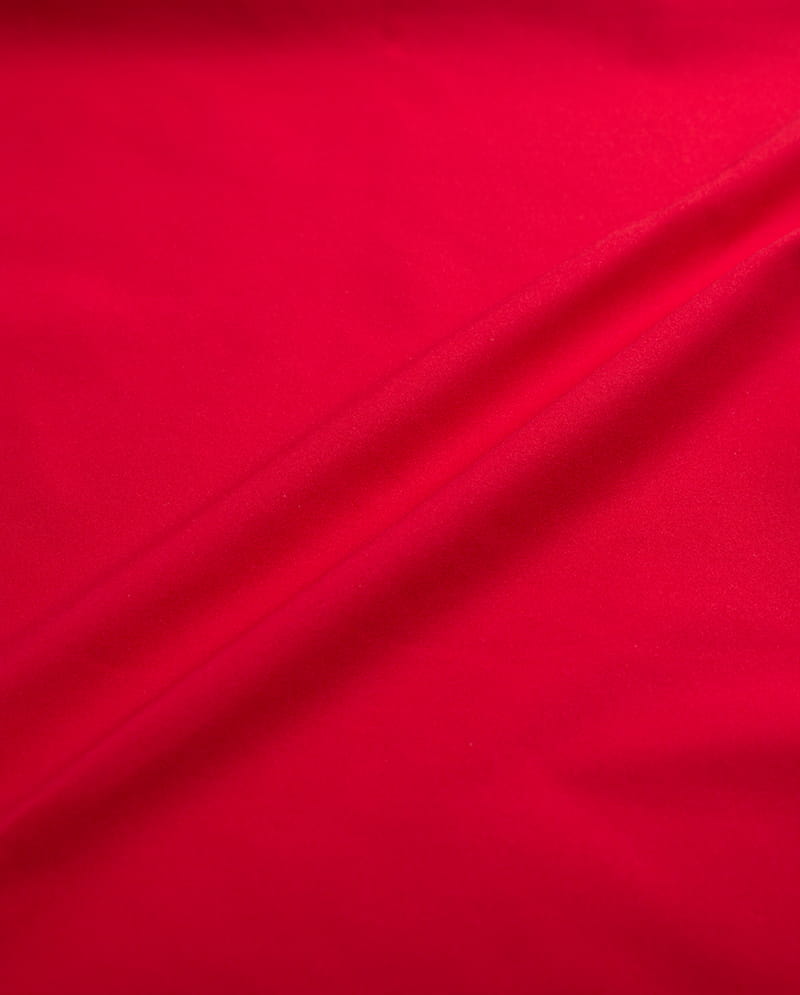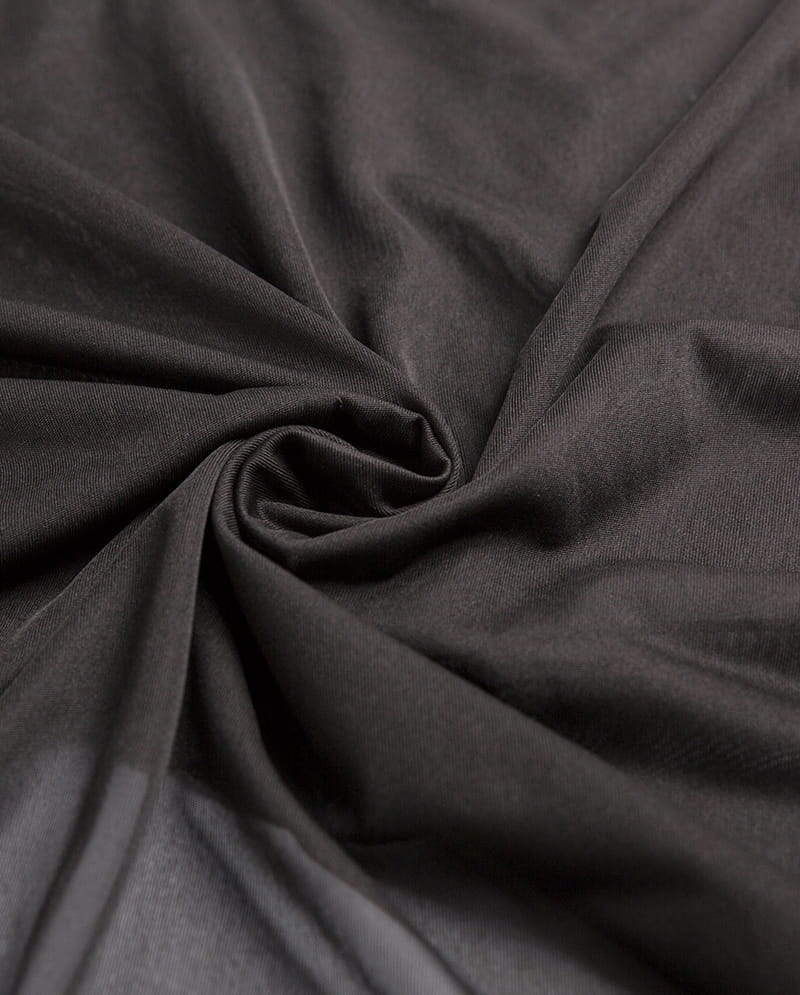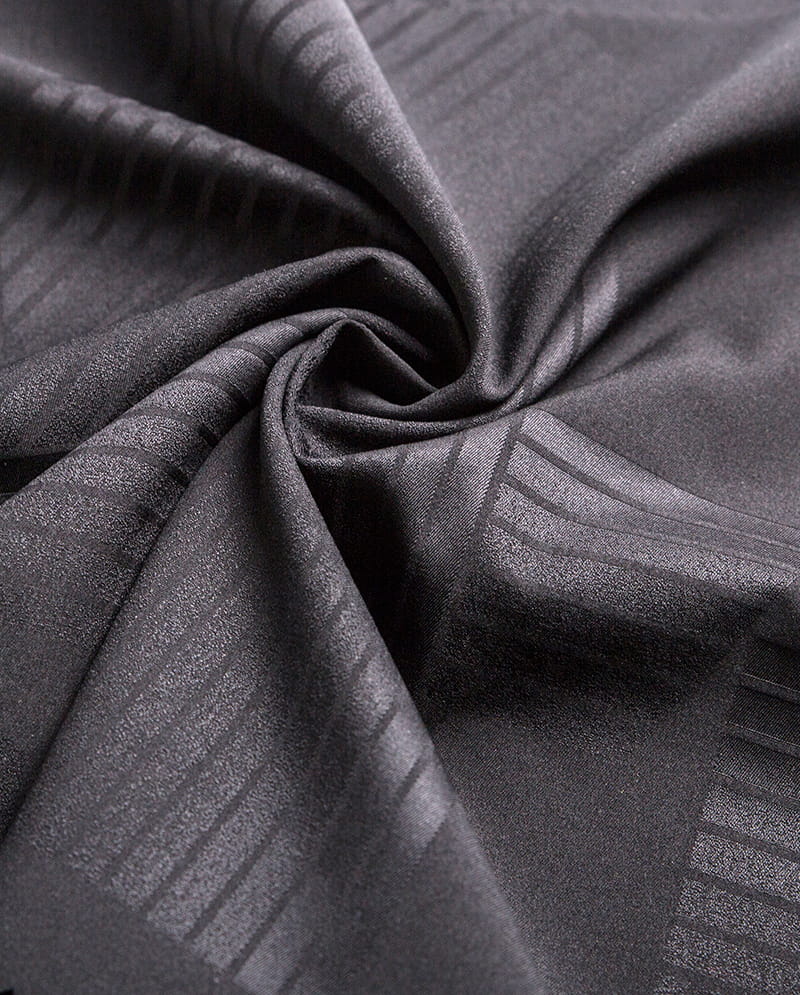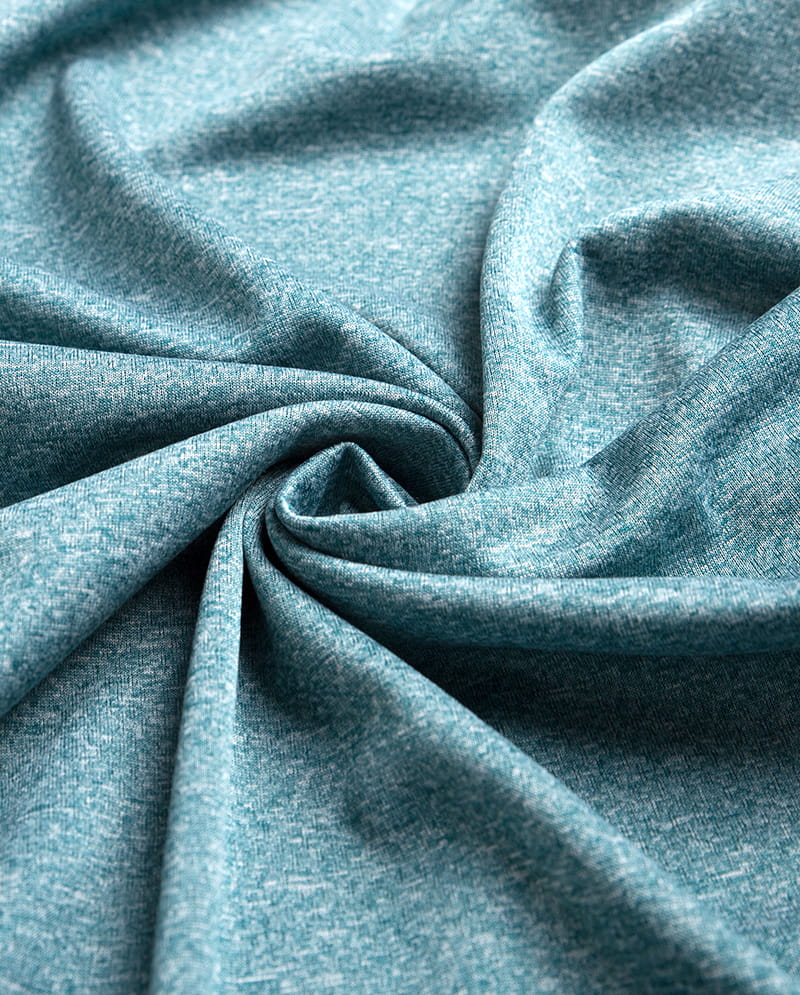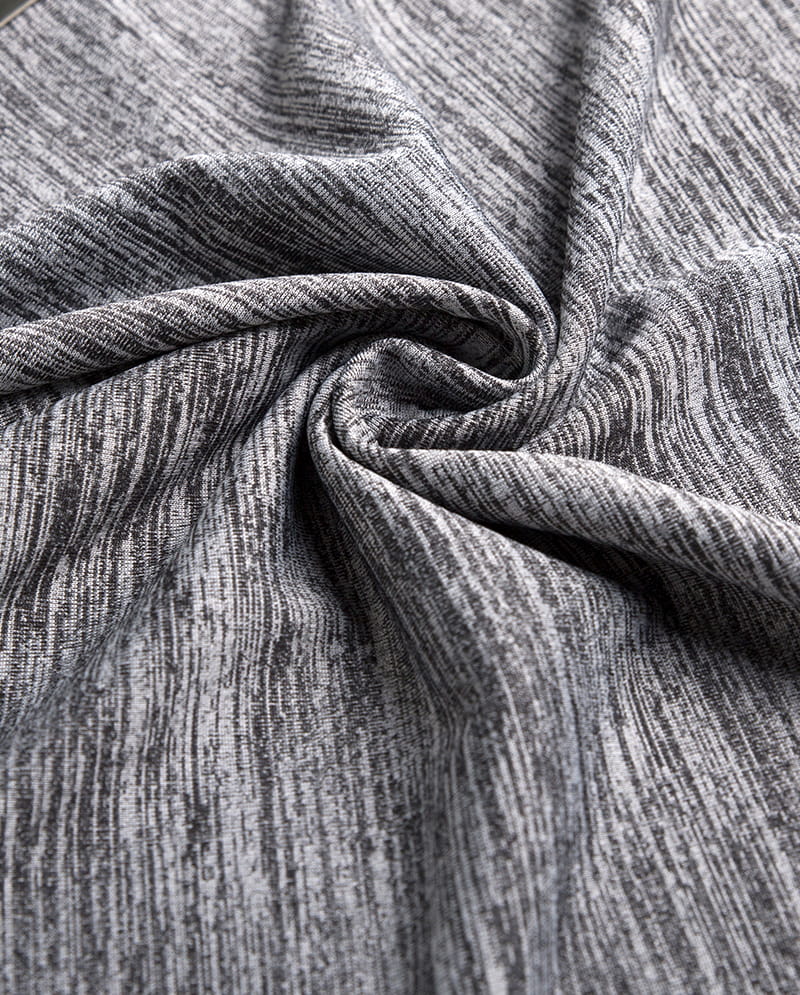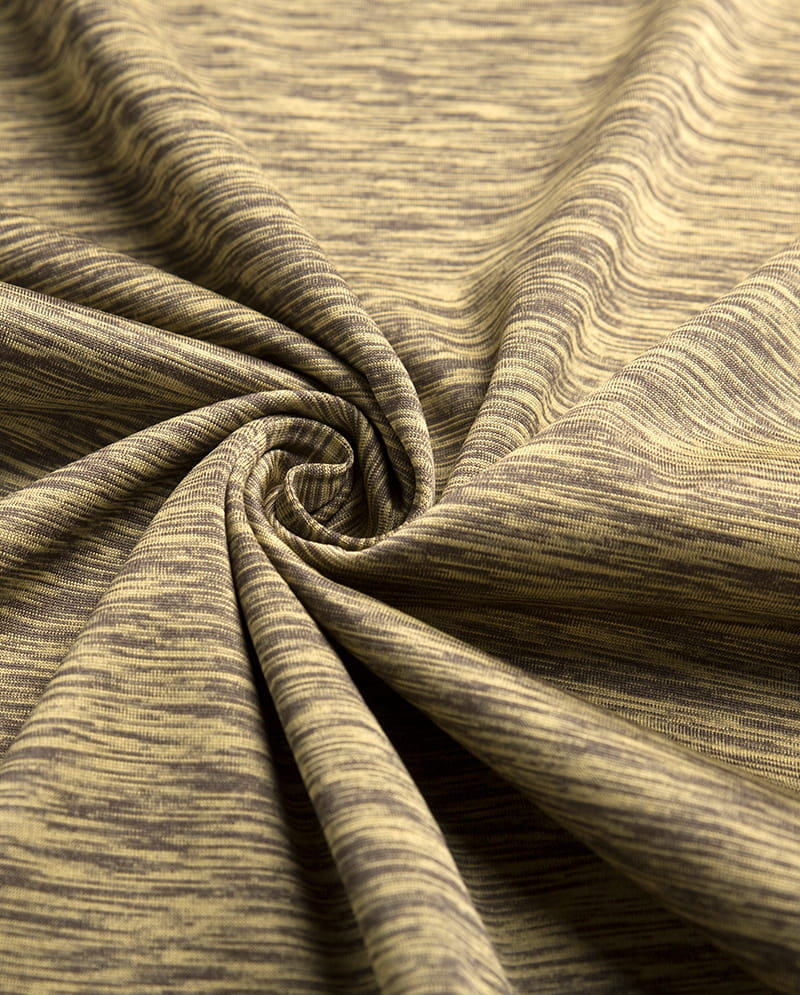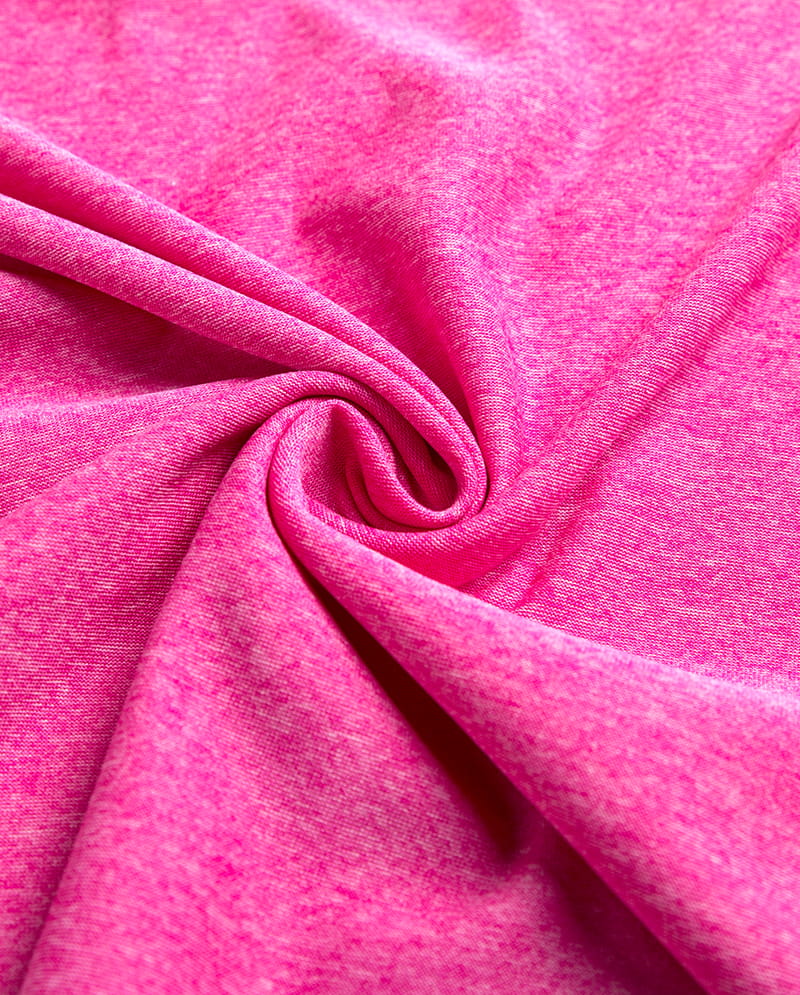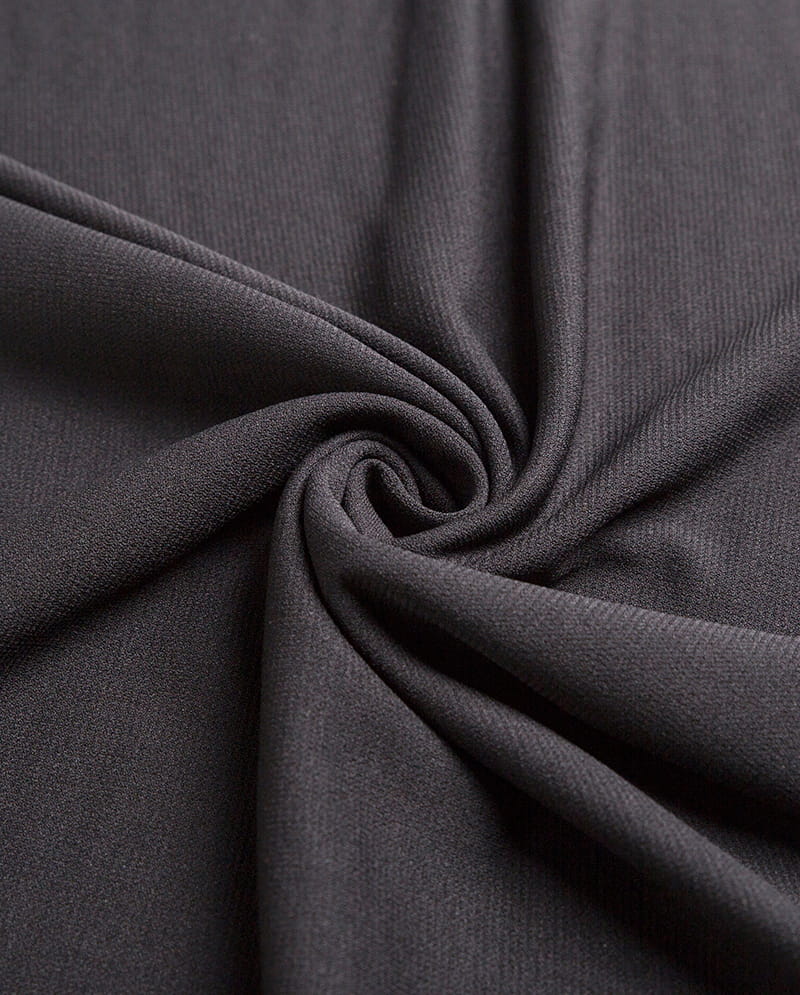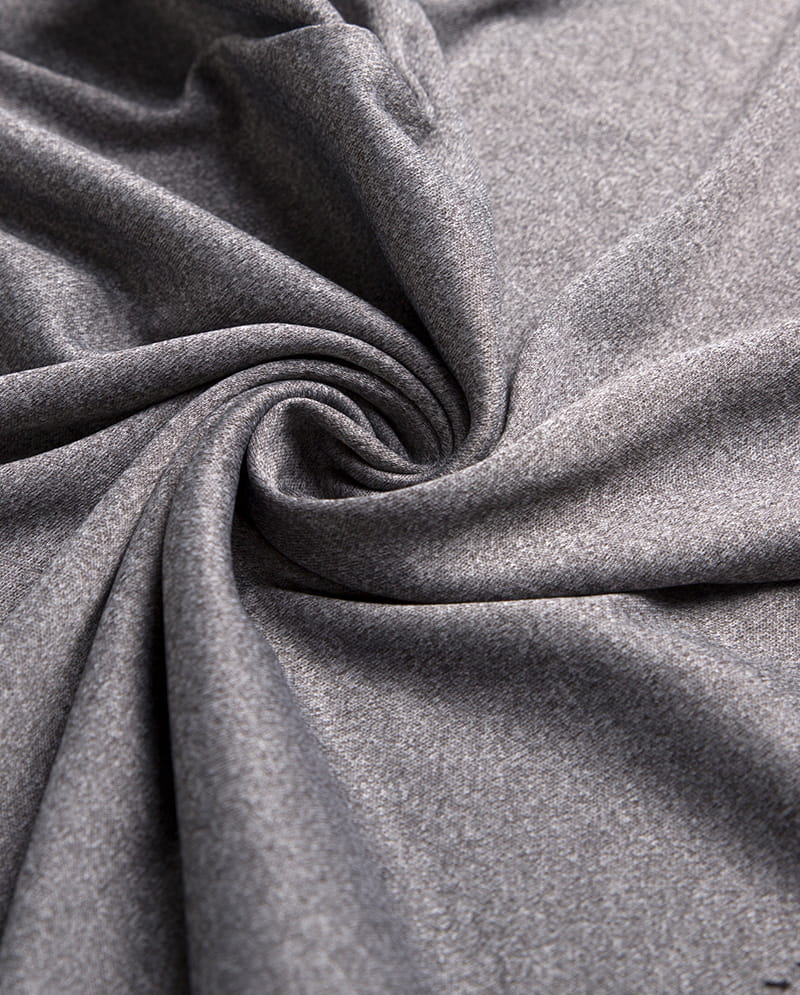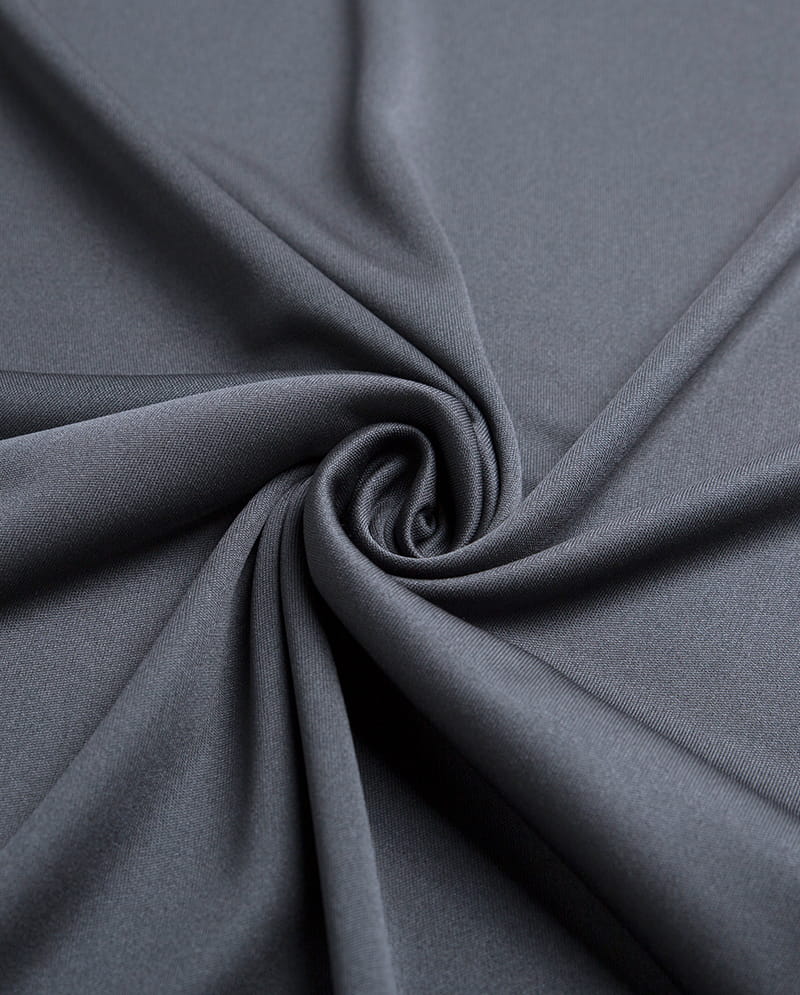Polyester Chips: A Comprehensive Introduction
1. What are Polyester Chips?
Polyester chips, also known as polyethylene terephthalate (PET) chips, are solid, granular substances. They are synthesized from purified terephthalic acid (PTA) and ethylene glycol (EG). The molecular formula of polyester is (C₁₀H₈O₄)ₙ, and it belongs to the polymer category. In appearance, polyester chips are usually white or light yellow transparent solids, with the CAS number 25038 - 59 - 9.
There are two primary manufacturing methods for polyester: direct esterification (PTA method) and ester exchange (DMT method). The PTA method has become the dominant choice since the 1980s due to its low raw material consumption and shorter reaction time.
In the market, polyester chips are often described as “bright,” “semi - dull,” or “dull” based on the titanium dioxide content. Titanium dioxide is added to the melt to reduce fiber luster. Bright polyester chips contain no titanium dioxide, dull polyester chips have around 0.1% titanium dioxide, semi - dull polyester chips contain approximately (0.32 ± 0.03)%, and full - dull polyester chips have a titanium dioxide content of 2.4% - 2.5%.
2. Types of Polyester Chips
2.1 PET Polyester Chips
PET polyester chips are the most common type. They are renowned for their excellent mechanical and thermal stability, as well as chemical resistance. PET polyester chips also possess outstanding transparency and surface gloss. These properties make them widely applicable in various industries, including the plastic, textile, construction, and packaging industries. For example, in the packaging industry, PET polyester chips are used to make clear plastic bottles for beverages, which not only provide good product visibility but also ensure product safety and durability.
2.2 PBT Polyester Chips
PBT polyester chips offer good insulation and weather resistance properties. These characteristics make them suitable for applications in the electrical, electronic, and automotive sectors. In the automotive industry, PBT polyester chips can be used to manufacture components such as connectors and housings, where their insulation properties help prevent electrical malfunctions, and their weather resistance ensures long - term performance in various environmental conditions.
2.3 PPE Polyester Chips
PPE polyester chips have high - temperature resistance and toughness. As a result, they are useful in the electronics, automotive, and construction industries. In the electronics industry, PPE polyester chips can be used to make parts for high - performance computing devices, where their high - temperature resistance allows them to withstand the heat generated during operation. In the construction industry, they can be used in applications where materials need to endure harsh environmental conditions and mechanical stress.
3. Classification of Polyester Chips
3.1 Based on Composition and Structure
Polyester chips can be classified into blend, copolymer, crystalline, liquid crystalline, cyclic polyester chips, and more. Blend polyester chips are made by combining different polymers to achieve specific properties. Copolymer polyester chips are formed by copolymerizing two or more different monomers. Crystalline polyester chips have a regular molecular arrangement, which gives them certain mechanical and thermal properties. Liquid crystalline polyester chips exhibit liquid - like and crystalline - like properties simultaneously, making them suitable for high - performance applications. Cyclic polyester chips have a cyclic molecular structure, which can lead to unique processing and performance characteristics.
3.2 Based on Properties
There are colored, flame retardant, anti - static, moisture - absorbing, anti - pilling, antibacterial, whitening, low melting point, and high melt (high viscosity) polyester chips. Colored polyester chips are added with pigments or dyes during the manufacturing process to obtain various colors, which are widely used in the textile and packaging industries for decorative purposes. Flame retardant polyester chips are treated with flame - retardant additives to enhance their fire resistance, making them suitable for applications in areas where fire safety is crucial, such as in the furniture and automotive interior industries. Anti - static polyester chips are designed to reduce static electricity accumulation, which is important in electronic device packaging and some textile applications. Moisture - absorbing polyester chips can absorb and release moisture, improving the comfort of fabrics made from them. Anti - pilling polyester chips are engineered to prevent the formation of pills on the fabric surface, maintaining the fabric's appearance and quality. Antibacterial polyester chips are incorporated with antibacterial agents to inhibit the growth of bacteria, which is beneficial for applications in the medical and hygiene industries. Whitening polyester chips are used to enhance the whiteness of products, such as in the production of white - colored plastic products or textiles. Low melting point polyester chips have a relatively low melting temperature, which can be useful in some adhesive and coating applications. High melt (high viscosity) polyester chips are suitable for applications that require high - strength and high - performance materials, such as in the production of industrial fibers.
3.3 Based on Purpose
There are textile - grade polyester chips, bottle - grade polyester chips, and film - grade polyester chips, which mainly differ in process parameters. Textile - grade polyester chips are used to produce polyester fibers for making clothing, carpets, and other textiles. They need to have suitable viscosity and other properties to ensure good spinning performance and fiber quality. Bottle - grade polyester chips are specifically designed for manufacturing plastic bottles. They require excellent transparency, barrier properties, and mechanical strength to protect the contents of the bottles and maintain product quality. Film - grade polyester chips are used to produce polyester films, which are used in applications such as packaging, electronics, and optical devices. These chips need to have properties that allow for the production of thin, strong, and transparent films.
Furthermore, fiber - grade polyester chips can be classified as ultra - bright (full - bright), bright, semi - dull, and (full) dull polyester chips depending on the level of matting agents used. Additionally, there are cationic polyester chips, which have unique chemical and physical properties due to the presence of cationic groups, and are often used in special textile applications to improve dyeability and other characteristics.
4. Polyester Chip Specifications
Polyester chip specifications include viscosity, carboxyl end group content, melting point, diethylene glycol content, color, titanium dioxide content, iron content, ash content, moisture, and irregularly shaped chips. Viscosity is an important parameter that affects the processing performance of polyester chips. For example, in the spinning process of textile - grade polyester chips, the appropriate viscosity ensures smooth fiber formation. The carboxyl end group content can affect the reactivity and stability of polyester chips. A higher carboxyl end group content may lead to increased reactivity, which can be both beneficial and challenging in different manufacturing processes. The melting point of polyester chips determines the temperature at which they change from a solid to a liquid state, and it is crucial for processing operations such as extrusion and injection molding. Diethylene glycol content can impact the properties of the final polyester product, such as its thermal stability and mechanical strength. Color is an obvious specification, especially for applications where appearance matters, such as in the production of colored plastics or textiles. Titanium dioxide content, as mentioned earlier, is related to the luster of the polyester chips. Iron content and ash content can affect the quality and performance of polyester chips, and high levels of impurities may lead to defects in the final products. Moisture content in polyester chips needs to be controlled, as excessive moisture can cause hydrolysis during processing, affecting the quality of the final product. The presence of irregularly shaped chips can also affect the processing efficiency and the quality of the products made from polyester chips, as they may cause problems in processes such as transportation, feeding, and molding.
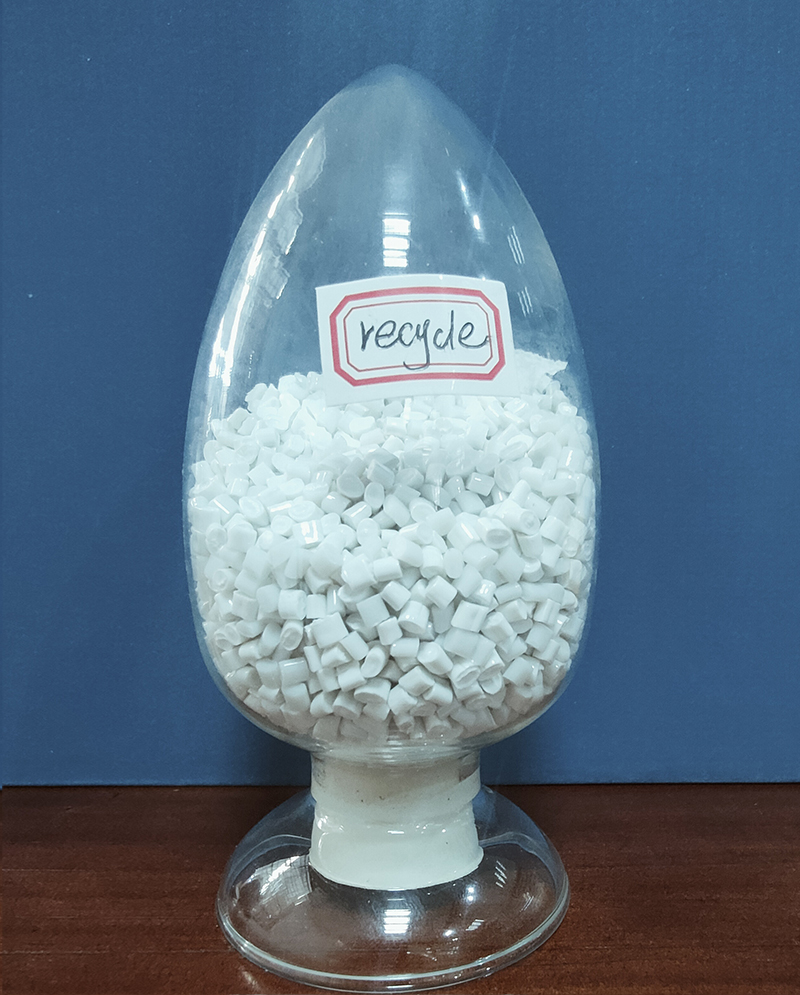
5. Polyester Chip Production Process
The production of polyester chips is part of the petrochemical industry, with the main raw materials being PTA and monoethylene glycol (MEG), and the industry's source being petroleum. The process begins with petroleum being processed into naphtha. Naphtha is then further refined into paraxylene (PX) through processes like catalytic reforming, aromatic hydrocarbon extraction, and isomerization. PX is converted into purified terephthalic acid (PTA) using acetic acid as a solvent, air oxidation, and hydrogenation purification. MEG is produced by the reaction of ethylene oxide, a derivative of the petrochemical industry.
Currently, the world primarily uses the direct reaction production process with PTA and EG to synthesize polyester. This process involves esterification and polycondensation reactions. The main production steps are as follows:
Slurry preparation: PTA and EG are mixed to create a slurry suitable for esterification. This step ensures uniform mixing of the reactants, which is crucial for the subsequent esterification reaction.
Additive mixing: Various additives required for production are prepared with EG. These additives can include catalysts, stabilizers, and colorants, which play important roles in controlling the reaction process and the properties of the final polyester chips.
Esterification: PTA and EG react under certain temperature and pressure conditions to produce the intermediate product, bis(2 - hydroxyethyl) terephthalate (BHET), and water. Water is separated by distillation and directed to the wastewater treatment system. The esterification reaction is a key step in the production of polyester chips, and the reaction conditions need to be carefully controlled to ensure high conversion rates and product quality.
Polymerization reaction: BHET undergoes polymerization at high temperatures, under vacuum, and in the presence of a catalyst. This step forms long - chain polyester molecules, and the polymerization conditions, such as temperature, pressure, and catalyst concentration, significantly affect the molecular weight and properties of the polyester.
Vacuum pumping: Steam from the esterification tower generates a vacuum to remove EG efficiently, ensuring normal polymerization. The removal of EG is necessary to drive the polymerization reaction forward and to control the molecular weight of the polyester.
EG recovery: The EG produced throughout the process is purified, with approximately 95% being recycled and mixed with PTA to form a slurry. Recycling EG not only reduces production costs but also is more environmentally friendly.
Pelletization: The dried and crystallized polyester chips are processed into specific - sized chips (granules) through filtration and pelletization. This step shapes the polyester into the familiar chip form for easy handling, transportation, and further processing.
Solid - phase polymerization: Polyester chips (granules) undergo solid - phase polymerization in a nitrogen atmosphere at a specific temperature. During this process, polymer chains undergo further reactions to improve chip polymerization and viscosity. Simultaneously, low - molecular - weight byproducts like EG and acetaldehyde are released. Solid - phase polymerization can enhance the properties of polyester chips, such as increasing their molecular weight and improving their thermal stability.
The overall process from petroleum to textile manufacturing can be described as follows: petroleum → naphtha → xylene (MX) → terephthalic acid (PX) → purified terephthalic acid (PTA) → polyester chips (also known as PET) → production of polyester fiber or processing polyester chip grades into staple fibers.
6. Applications of Polyester Chips
6.1 Packaging Industry
Bottle Manufacturing: Bottle - grade polyester chips are widely used in the production of plastic bottles for beverages, food, cosmetics, and pharmaceuticals. Their excellent transparency allows consumers to easily see the product inside. For example, most of the plastic water bottles, soda bottles, and juice bottles on the market are made from polyester chips. The high barrier properties of polyester prevent the permeation of oxygen, moisture, and other substances, thus protecting the quality and shelf - life of the products. In the case of food and beverage packaging, this is crucial to maintain the taste, freshness, and nutritional value of the contents. For pharmaceutical packaging, it ensures the stability and safety of drugs.
Film Packaging: Film - grade polyester chips are used to produce polyester films, which are used for wrapping various products. These films can be used in food packaging to provide a protective barrier, as well as in the packaging of electronics and other consumer goods. In the food industry, polyester films can be used for vacuum packaging, which helps to extend the shelf - life of food products by reducing oxygen exposure. In the electronics industry, polyester films can be used to protect delicate components from dust, moisture, and mechanical damage.
6.2 Textile Industry
Fiber Production: Textile - grade polyester chips are the raw material for producing polyester fibers. These fibers can be made into a variety of textiles, including clothing, carpets, and upholstery. Polyester fibers are known for their durability, wrinkle - resistance, and ability to retain their shape. In the clothing industry, polyester fibers are often blended with natural fibers such as cotton or wool to combine the advantages of both. For example, polyester - cotton blends are popular in shirts and trousers as they offer the strength and easy - care properties of polyester along with the breathability of cotton. In the carpet industry, polyester fibers are used to make carpets that are resistant to wear and staining. In upholstery, polyester - based fabrics are used for their durability and ability to withstand frequent use.
Technical Textiles: Polyester fibers made from polyester chips are also used in technical textiles. These include applications such as industrial filters, where the chemical resistance and high strength of polyester fibers make them suitable for filtering out impurities in various industrial processes. They are also used in automotive seat belts, where their high tensile strength is essential for ensuring the safety of passengers. In addition, polyester fibers are used in geotextiles, which are used in construction projects to reinforce soil, separate different soil layers, and filter water.
6.3 Other Industries
Construction Industry: In the construction industry, polyester chips can be used in the production of building materials. For example, polyester - based resins can be used to make composites that are used in the construction of pipes, panels, and other components. These composites offer good mechanical properties, corrosion resistance, and lightweight characteristics. Polyester - based coatings can also be used to protect and decorate building surfaces, providing durability and aesthetic appeal.
Automotive Industry: The automotive industry uses polyester chips in various applications. Polyester - based plastics can be used to make interior components such as dashboards, door panels, and seat covers. These materials are lightweight, which helps to improve fuel efficiency, and they can be molded into complex shapes to meet the design requirements of modern automobiles. Polyester fibers can also be used in the production of automotive filters, where their filtering properties are important for maintaining the performance of the engine and other components.
7. Market and Future Trends of Polyester Chips
7.1 Market Overview
The global polyester chips market has been growing steadily in recent years. China has become the largest producer and exporter of polyester chips globally. In terms of production capacity, China accounts for over 40% of the global total, and there has been significant capacity expansion in recent years. The market for polyester chips is driven by the increasing demand from various end - use industries, such as the packaging, textile, and construction industries.
In the packaging industry, the growing consumption of bottled beverages, food products, and the increasing demand for convenient and safe packaging solutions have led to a continuous increase in the demand for bottle - grade polyester chips. In the textile industry, the expanding fashion market, especially in emerging economies, and the growing popularity of synthetic fibers due to their cost - effectiveness and performance advantages, have contributed to the growth of the demand for textile - grade polyester chips.
7.2 Future Trends
Sustainability: With the increasing awareness of environmental protection, there is a growing trend towards the development and use of sustainable polyester chips. This includes the use of recycled polyester chips, which are made from post - consumer plastic bottles and other polyester waste. Brands like Puma are collaborating with companies like Re&Up Recycling Technologies to expand the use of recycled polyester chips in the textile industry, aiming to reduce the environmental impact of the textile production process. In the future, more efforts will be made to improve the recycling technology and increase the proportion of recycled polyester chips in the market.
Innovation in Properties: There will be continuous research and development to improve the properties of polyester chips. For example, the development of polyester chips with enhanced flame retardancy, antibacterial properties, and moisture - management capabilities. These innovative polyester chips will open up new application areas and meet the higher requirements of different industries. In the medical industry, antibacterial polyester chips can be used to make medical textiles that reduce the risk of infection. In the sports and outdoor industry, polyester chips with improved moisture - management properties can be used to make more comfortable and functional sportswear.
Market Expansion in Emerging Economies: As emerging economies continue to develop, the demand for polyester chips in these regions is expected to increase. The growing middle - class population in countries like India and Brazil, along with the expansion of industries such as packaging and textiles, will drive the market growth. These emerging economies may also become important players in the production of polyester chips, as they have access to abundant raw materials and a growing labor force.

 English
English 中文简体
中文简体